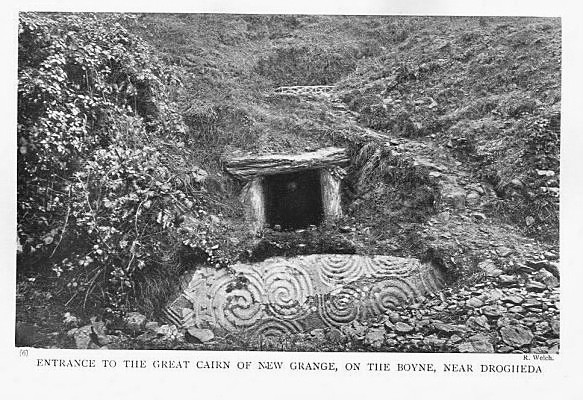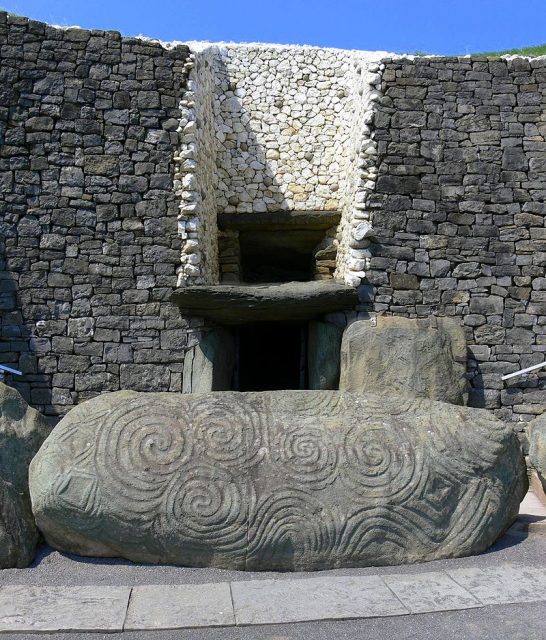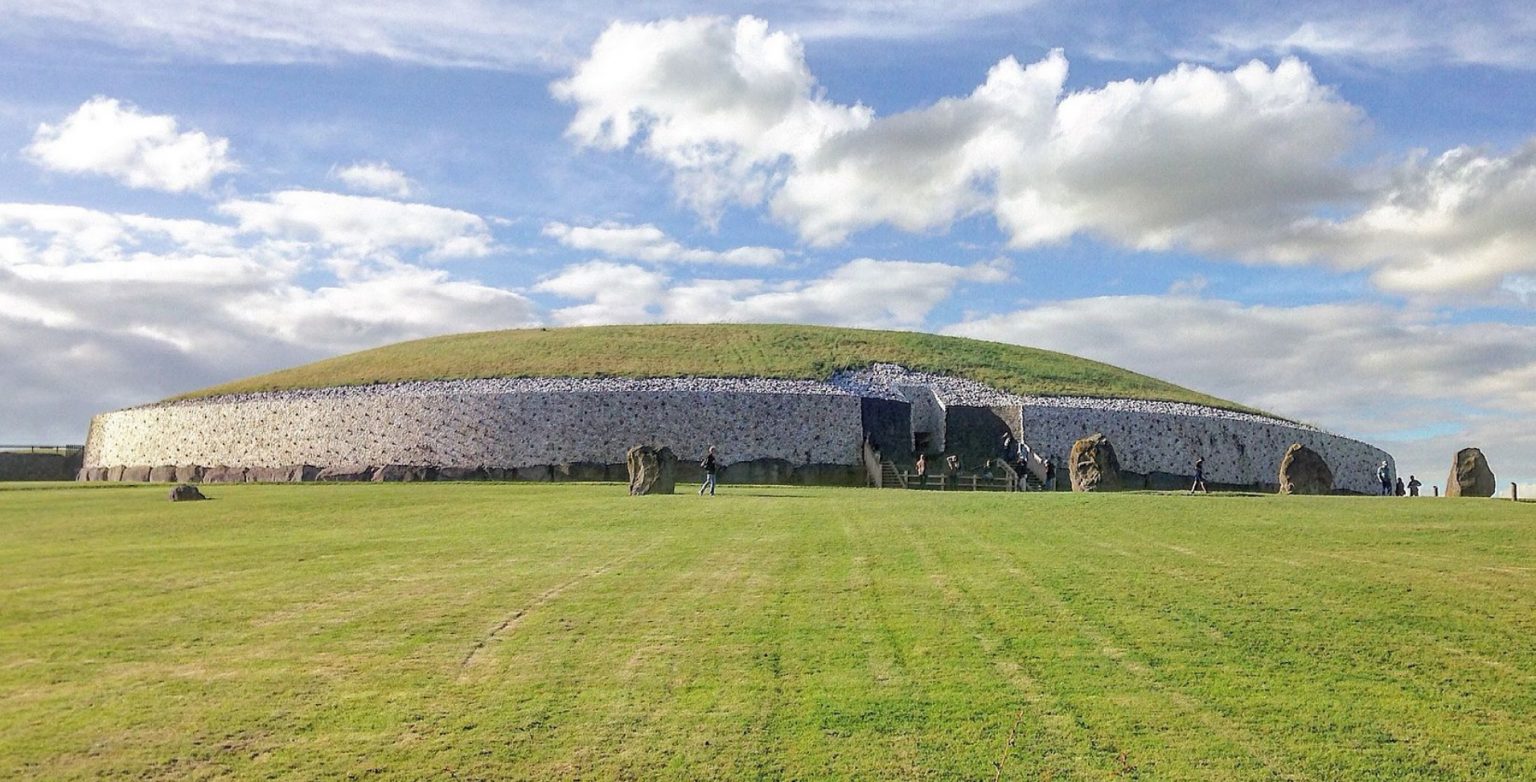Tomb of Newgrange | National Geographic | 2:36
23.3M subscribers | 424,521 views | August 12, 2009
Tomb of Newgrange | National Geographic | 2:36
23.3M subscribers | 424,521 views | August 12, 2009

The entrance to Newgrange in the late 1800s, when the mound had become largely overgrown

The entrance today...

A front view of the Neolithic Newgrange monument taken from outside the grounds.
This picture from the OP link interested me so much:

Did they run out of black stone, or did they plan this shift in design? Surely they could not have brought all 200,000 tons of stone at the same time and then laid it out like a jigsaw puzzle.
The consistency of size, shape and texture of the black&white portion is amazing. Then in the white portion, you have those distinct rounded stones poking out at intervals. You have to wonder how they measured everything and kept the entire rounded perimeter a more pleasing shape than that Frank Lloyd Wright monstrosity, the Guggenheim Museum (1959) in NY City.

You can see in this photo that the rounded sections are visibly lumpy and the curve imperfect, as the interior walls are also (went there in the early 60s). Whereas this ancient tomb is beautifully shaped, with clean lines.
Also, perhaps from centuries of building farm enclosures from the stones dug up when tilling a field, the Newgrange builders knew how to angle the wall inward at the top so that the earth gathering moisture over the years would not push the wall over. I'm curious about the drainage scheme, which I can't figure out from the pictures. Maybe there is a french drain behind the large boulders at the base.